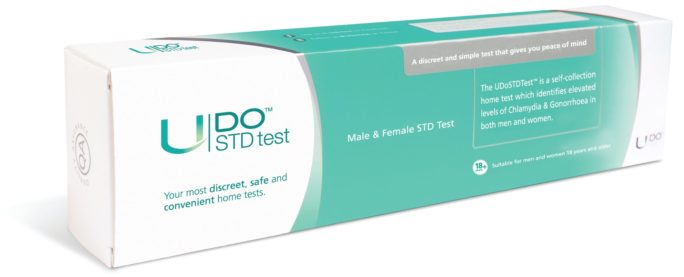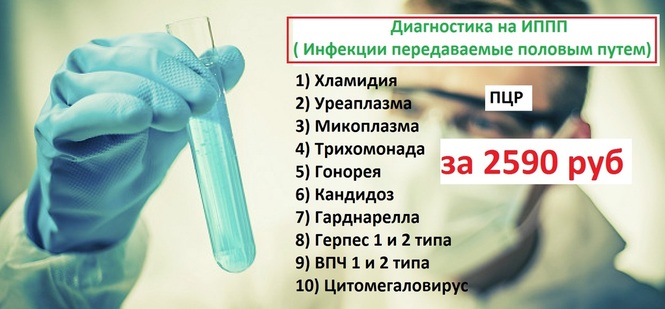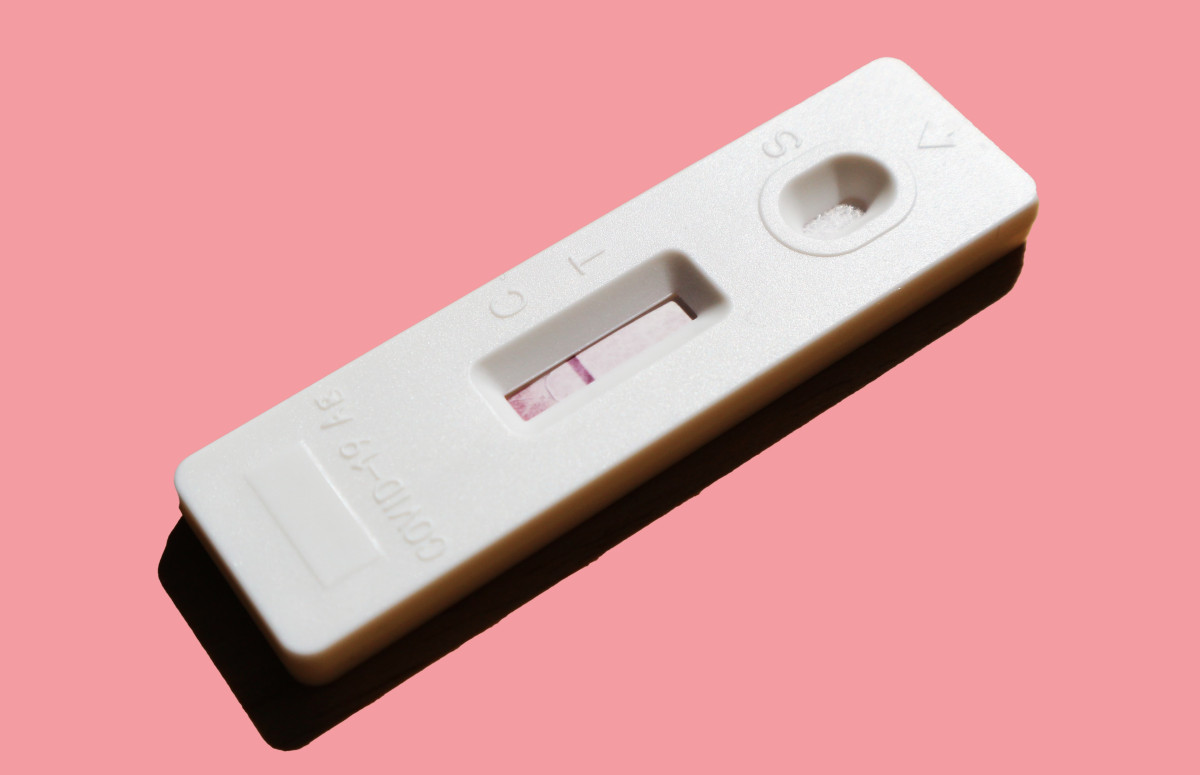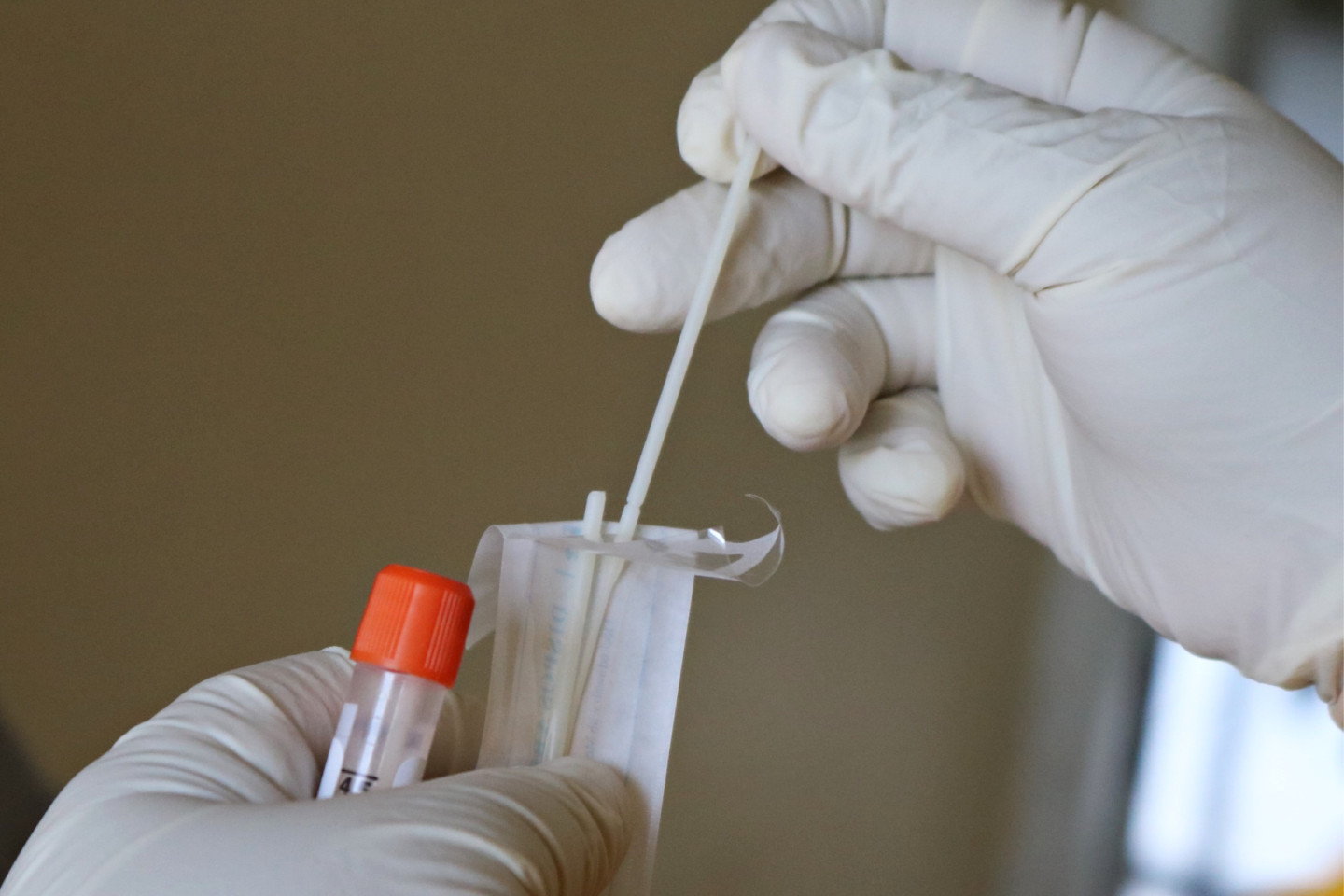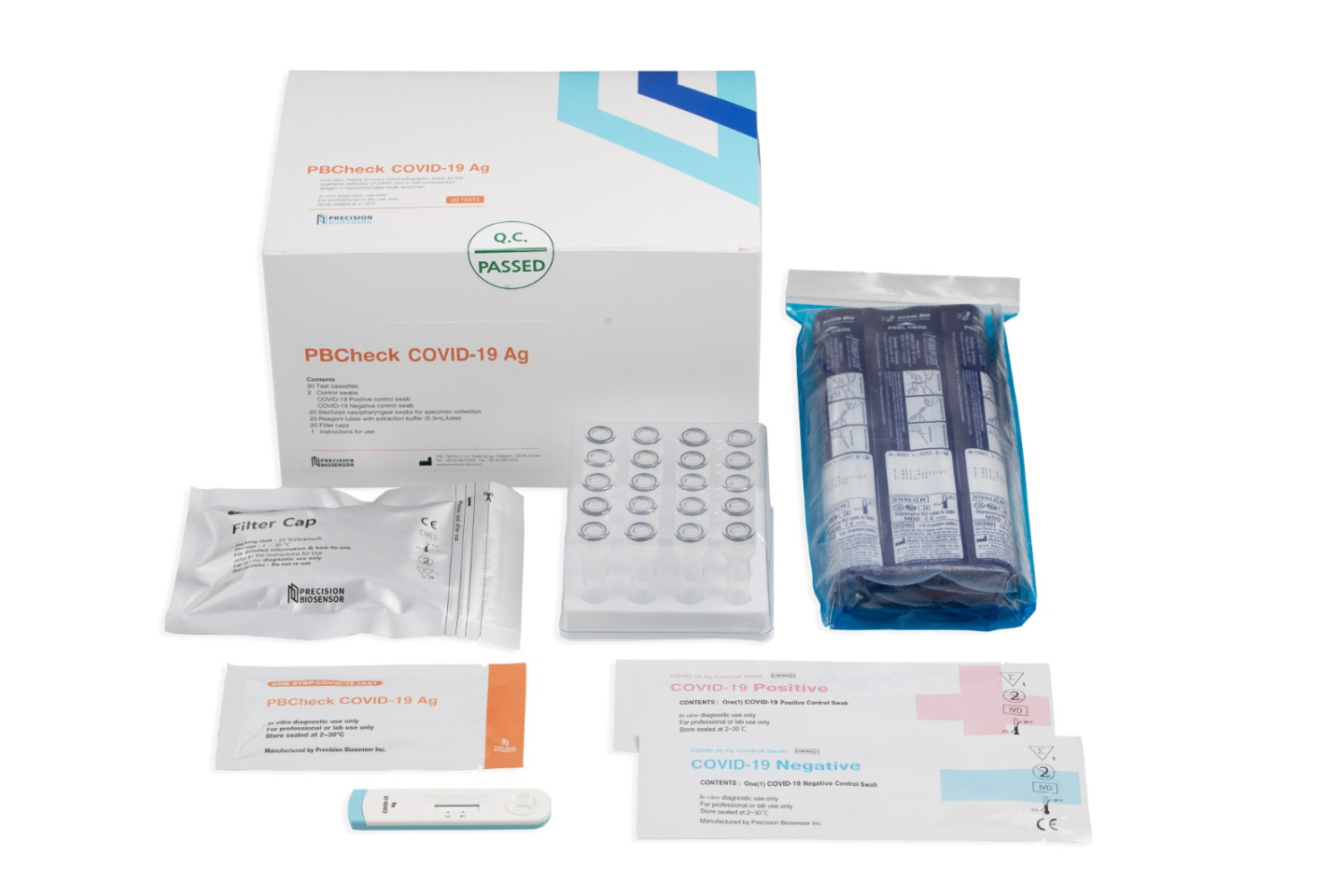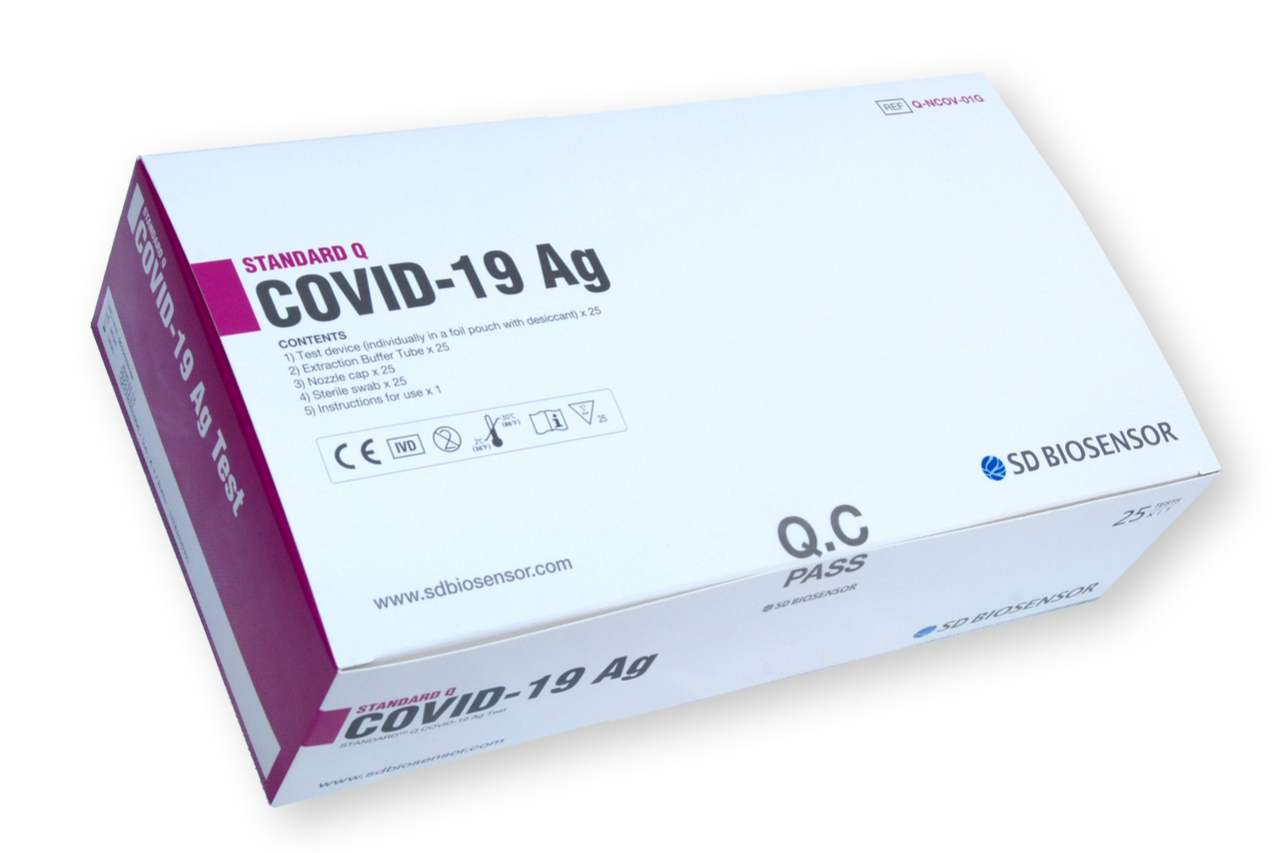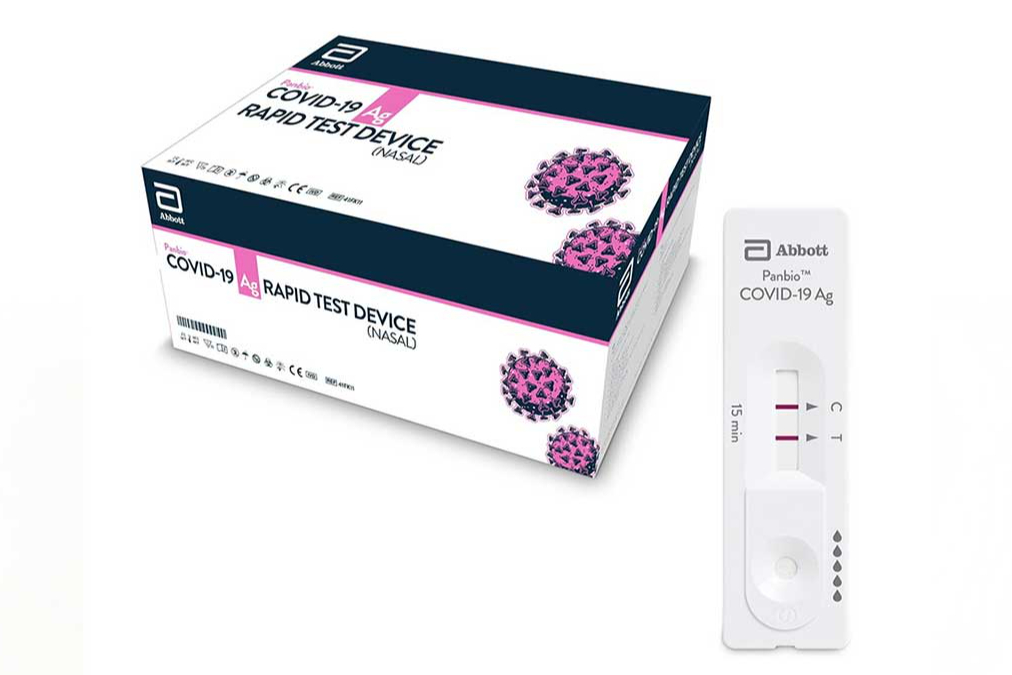std test что это
STD тест – что это такое?
25.09.2019 1,479 Просмотры
Этот тест направлен на выявление инфекций, которые передаются половым путем. Заболевания при этих инфекциях способны привести к серьезным проблемам со здоровьем. Причем явление это нередкое.
В тех же США каждый год возникает около 20 млн новых ИППП. Но не все получают быстрое и необходимое лечение, ведь зачастую заболевания проходят без ярко выраженных симптомов.
Но если ваши отношения длятся долго и моногамно, а до вступления в них вы и ваш партнер прошли через STD-тестирование, то беспокоиться не о чем.
На какие инфекции проводится тестирование? Существует несколько основных заболеваний, которые проверяются врачом. Среди них – ВИЧ, сифилис, трихомониаз, гонорея, хламидия, гепатит Б. Проверки на данные заболевания следует запрашивать отдельно, автоматически их не проводят.
Кроме того, если вы занимаетесь не только классическим, но и анальным сексом, то нужно попросить врача провести тестирование и в этом случае. Ведь некоторые анальные инфекции нельзя обнаружить при помощи обычного теста. Также необходимо сообщать врачу о типах защиты, которые используются, принимаемых лекарствах, а также о количестве сексуальных партнеров.
Кроме того, не следует забывать, что если присутствуют вышеперечисленные факторы риска, то через тестирование надо проходить регулярно, пока эти факторы не устранятся. И тогда можно будет не переживать за свое здоровье и здоровье вашего партнера.
Fast, Private & Affordable
STD Testing
Find the right tests
Choose a location
Fast online results
Doctor follow-up
STDTest.com is dedicated to helping people like you
who want to take care of their sexual health.
Why get tested? It’s for your health. The STD testing conversation can be difficult, but we’re here to make it easier. No matter your reasons, our efficient, affordable and confidential care will help ease the burden of doubt and help you with any questions you have for the future.
How is STD testing performed?
Some tests call for different procedures. The type of test depends on the STDs for which you are being tested.
Blood Sample Collection – A blood draw is need for several STD tests.
Urine Sample Collection – This is another common method used for STD testing. The urine sample would replace a swab test.
When should I get tested?
Millions of people across the country have STDs and aren’t even aware, and the easiest way to find out is to get tested. Clearing up any questions around sexual health is important. You should get tested if you’re experiencing common STD symptoms including:
It’s always a good idea to get tested if you are currently with multiple partners, have been with multiple partners over the last year who have not been tested, or if a former or current partner has tested positive for an STD.
What are my options for private testing?
The answer is simple, confidential and affordable. By selecting your STD tests online or giving us a call, you can set up a same-day STD test at a local lab. You’ll have the results of your test in about 48 hours, and there are doctors on call to answer any questions and discuss results. The process is designed to be as private and convenient as possible.
Your privacy is our priority
Your health information is protected by strict federal and state privacy laws, and we use industry standard practices to ensure the security of that information. Get Tested Now
The STD Test Guide
Untreated sexually transmitted diseases can lead to a host of serious outcomes ranging from infertility to death. STDs, including herpes, HPV, syphilis, gonorrhea and Chlamydia, also are highly contagious, putting a person’s sexual partners at an increased risk for disease as well. It is important for anyone who suspects they may have an STD to be tested in order to protect their health as well as the well-being of their partners.
Herpes
Caused by the herpes simplex virus (HSV), herpes is a sexually transmitted disease associated with genital sores. According to the Centers for Disease Control, at least 45 million Americans over the age of 12 have been infected with the herpes virus. There is no cure for herpes, and after infection, the virus stays in the body for life.
A herpes test, which detects the presence of HSV, can be conducted either on a sample of fluid from a sore or from a blood sample.
The viral culture, which is one herpes test that uses fluid from a sore, is the best method for detecting the herpes virus. The fluid, which can be taken from the vagina, cervix, penis, urethra, eye, throat or skin, is collected with a cotton swab and placed in a cell culture. Ideally, the sample will be collected from a sore that is just a few days old, because new sores are more likely to contain the virus.
If HSV is present and infects the cells in the culture, those changes will be visible under a microscope. A sample of fluid from a sore can be collected at the doctor’s office and sent to a lab for evaluation. Home herpes tests are available. With these, a patient can take his or her own sample and send it to a provider for processing.
Depending on the analysis method used, viral culture results can be available anywhere from 24 hours to two weeks later.
The blood test for herpes looks for the antibodies that the immune system creates to fight off the herpes virus. However, the antibody test is less precise than the viral culture. The presence of herpes antibodies may indicate a past infection rather than a current one, for example, or in case of a recent infection, the antibodies may not yet be present.
A regular blood draw can be used for the herpes blood test, and no special preparations or precautions are necessary. The risks are minimal, although minor bruising may occur at the site of the blood draw. People with bleeding disorders or on blood thinners should notify their physicians before taking a blood test.
There are approximately 100 strains of the human papilloma virus, or HPV, and around 30 of them are transmitted sexually. While some strains cause visible warts, others are asymptomatic and many people do not even realize they have an HPV infection.
Most strains of HPV go away on their own, but a handful are more dangerous and warrant special attention. Those high-risk strains can lead to cervical cancer, and two of them, HPV-16 and HPV-18 are responsible for 70 percent of all cervical cancer cases, according to the American Cancer Society.
Early HPV detection can save a woman’s life. Physicians recommend that all women over the age of 30 get an HPV test every year because that demographic faces the highest risk of cervical cancer. However, HPV testing is only a routine procedure when a woman’s pap smear results are inconclusive. Therefore, women over 30 should specifically ask their gynecologists for the HPV test at their annual exam.
The HPV test, which identifies HPV DNA, can be done on a pap smear sample collected in a doctor’s office or clinic. HPV test results are generally available in one to two weeks, and a positive result may lead a health professional to recommend follow-up testing, such as a colposcopy or biopsy, or another HPV test a few months later.
Syphilis
Syphilis is dangerous: an untreated syphilis infection can spread throughout the bodyand lead to brain damage, blindness and even death. The disease is also on the rise. The Centers for Disease Control saw nearly a 20 percent increase in syphilis cases between 2006 and 2007, the most recent year for which statistics are available.
Because pregnant women can transmit syphilis to their unborn children, all expectant mothers should be screened for syphilis early in pregnancy. In some states, a couple must take syphilis tests before they can obtain a marriage license.
The most recognizable early symptom of syphilis is the open sore known as a chancre that appears where the syphilis first entered the body, generally in the genital area, mouth or anus. A syphilis test can be conducted on fluid from a chancre, blood, skin tissue or spinal fluid.
In order to get a fluid sample, a health professional will gently press on a chancre and collect the fluid that comes out. A sample can also be taken from the skin by swabbing the area of a rash.
In cases of samples from the chancre fluid or the skin, the specimen is examined using a special tool called a dark-field microscope, in order to identify the syphilis-causing bacteria.
A blood sample drawn from a vein can also be used for syphilis testing. In this case, the lab will check the blood sample for antibodies that are generated in response to the syphilis bacteria. A minimal risk of bruising is associated with blood draws, and people with bleeding disorders should check with their physicians prior to having blood drawn.
In advanced syphilis cases in which the nervous system is affected, a cerebrospinal fluid syphilis test may be needed to determine how far the disease has progressed. A health professional will use a spinal tap obtain a sample for this test, inserting a needle into the patient’s lower back and withdrawing fluid from the spinal canal.
Syphilis test results are typically available within one week to 10 days. There is not yet an FDA-approved home syphilis test.
Gonorrhea
Health care professionals are legally required to report cases of gonorrhea, and according to the Centers for Disease Control, gonorrhea is the second most common reportable disease in the United States. In 2007, 355,991 cases were reported throughout the country.
The most common gonorrhea symptoms in both men and women are an itching or burning sensation, especially during urination, and unusual discharge from the affected area.
Women between the ages of 15 and 24 have the highest rates of the disease, and women face the most serious consequences from untreated gonorrhea, which can leave them unable to have children.
Gonorrhea tests look for the gonorrhea bacteria in a sample of body fluid or urine. There are a number of methods of gonorrhea testing. For example, body fluid or a urine specimen may be subjected to a biochemical reaction that shows gonorrhea bacteria DNA is present in the sample. A different kind of gonorrhea test looks for antigens, or substances that spark an immune response to the bacteria, in the sample. Still another gonorrhea testing method involves culturing the sample to see if the gonorrhea bacteria are present and multiply.
If a sample of body fluid is being used, the health professional will take it from the affected area, which could be the urethra, cervix, rectum or eye. A urine sample can also be collected at home and sent to a private laboratory for evaluation.
The risks associated with having a fluid sample taken are low. Women may experience minor vaginal bleeding if a sample is collected from the cervix. A person may also experience sudden dizziness or fainting because of fear or pain when the swab is inserted into the urethra, although this is rare.
Gonorrhea test results are available within 24-72 hours.
Chlamydia
Chlamydia is the most common sexually transmitted bacterial disease in the United States. It also often goes unnoticed because three-quarters of infected women and half of all infected men exhibit no symptoms. However, it comes with serious consequences, especially in women, who can develop pelvic inflammatory disease when Chlamydia goes untreated.
Because Chlamydia is so common, the American College of Obstetricians and Gynecologist recommend that all sexually active adolescents and young women age 25 and younger get a Chlamydia test. Chlamydia can be passed from mother to child during childbirth, so it is recommended that pregnant women be tested for Chlamydia as well.
Several types of tests can be used to find a Chlamydia infection, and most of them are similar to gonorrhea tests. In fact, in some cases, Chlamydia tests and gonorrhea tests can be conducted on the same sample. Chlamydia tests also may detect the presence of bacterial DNA or antigens associated with the bacteria.
Most tests use a sample of body fluid from the affected area, generally the cervix, urethra, rectum, or eye, although a urine specimen may also be used for a Chlamydia test. For a urine test, the sample may either be collected in a doctor’s office or health clinic or at home then sent to a laboratory for evaluation.
If Chlamydia persists even after treatment, a Chlamydia culture may be necessary. A sample from the affected area is placed in a special cup that allows the Chlamydia bacteria to grow. The Chlamydia culture test is more expensive and the results take longer than the other tests.
Results from a Chlamydia test using a urine specimen typically are available within 24-72 hours.
If you feel that you have an STD or may have been exposed to one and are in need of an STD test, please visit our STD Test Directory. For more on STD tests, read our interview with Tracey Powell, STD test expert.
Important facts about STD testing: From the earliest testing time to definitive
Sexually transmitted diseases (STD) or sexually transmitted infections (STI) are quite widespread. Frequently, they present without any symptoms, and many people are not aware of being infected. While having doubts, concerns, and suspicion of infection after the latest sexual intercourse and seeking help on the internet, you may find out that various testing types exist. How soon after exposure can you get tested, and which test is definitive? Here is all you need to know about STD testing for different specific STIs.1
HIV testing
Which tests are used for early Human immunodeficiency virus (HIV) detection, and how accurate are they?
Neither of the existing HIV tests is informative directly after the exposure.
The period during which a person may have been infected with HIV, and the test will be able to detect the virus itself or its antigens and antibodies is called the Window period. Its duration varies from one individual to another and is different for each particular test. 2
| HIV Test | Earliest time and accuracy for testing | Definitive time (99% accurate) |
|---|---|---|
| Ultrasensitive HIV RNA detection tests | after 5 days (90% accurate) | 42 days |
| Sensitive HIV RNA detection tests | after 10-15 days (90% accurate) | 42 days |
| HIV p24 antigen detection test | after 15-22 days (89% accurate) | 42 days |
| Fourth-generation combined antigen/antibody tests | after 15-20 days (80% accurate) | 43-44 days |
| Fourth-generation combined antigen/antibody tests | after 23 days (95% accurate after 6 weeks) | after 3 months |
Golden standard algorithm for early HIV testing
When is the test for HIV false-negative, and when is it definitive?
Likelihood of false-negative results is high if you took the test during the window period. To avoid false-negative results, you should repeat the test after the window period. If the initial testing was during the first 12 weeks after possible exposure, the test should be repeated after an extra 12 weeks for more reliable results. 6
Chlamydia and Gonorrhea testing
The incubation period for Chlamydia
The incubation period for Chlamydia varies between 5 to 14 days, and common practice suggests getting tested 2 weeks after initial exposure. 7
An earliest possible testing time for Gonorrhea
It is possible to get tested for Gonorrhea already as early as 2-3 days after exposure.8 Its incubation period varies from 2-7 days (sometimes till 14 days). 9
Test of choice for Chlamydia and Gonorrhea. When to get tested?
Swabs from the vagina, which are more informative for women, and first-catch/first void urine, which is preferable for men, are used in the nucleic acid amplification tests (NAAT). These tests are the most reliable and preferred testing methods (also called as “gold standard”) for Chlamydia and Gonorrhea detection. Swabs from the rectum, oropharynx (for Gonorrhea), endocervix and the urethra may also be collected. Because of relatively high coinfection incidence, many physicians suggest getting tested for multiple infections simultaneously 2 weeks after possible exposure, considering financial and psychological aspects of intervention and several hospital visits issue. 10
Trichomonas testing
The incubation period for Trichomonas constitutes 5-28 days. Tests using urine or swabs (NAAT) are very sensitive and specific also for Trichomonas detection, thus as mentioned above it is suggested to test for Trichomonas at the same time with Gonorrhea and Chlamydia (2 weeks after possible exposure). Microscopic tests are also widely applied, but they are less accurate. 11
Mycoplasma and Ureaplasma testing
The incubation period for Mycoplasma Genitalium varies from 2 to 35 days. 12 Incubation period for Ureaplasma constitutes 10-20 days. 13 Common practice suggests testing for Mycoplasma and Ureaplasma only when the other pathogens causing the urethral infection are excluded. 14 Collection of swabs or urine (NAAT) is the best option if you want to get tested. 15
Genital herpes testing
Genital herpes has a relatively short incubation period from 2-12 days, and symptoms usually develop within 3-6 days after exposure. In symptomatic patients, healthcare professionals suggest taking samples from blisters with the help of cotton buds (NAAT) 2 days after the blisters have developed. Herpes culture tests can also be performed, but they are shown to be less accurate. If the symptoms are absent, it is reasonable to take blood tests for IgG antibody detection. These antibodies are part of our immune defense against herpes virus, and for rather conclusive and definitive results it is suggested to wait for 12-16 weeks. IgM can be detected earlier, but it can provide misleading results, thus IgG detection is more accurate. 16
| Disease | Incubation period | Earliest time for testing | Definitive time | Sample used |
|---|---|---|---|---|
| Chlamydia | 5-14 days (sometimes till 21 days) | 5 days (accuracy is unknown) | after 2-3 weeks (preferable time) | Swabs/urine |
| Gonorrhea | 2-7 days (sometimes till 14 days) | 2-3 days (accuracy is unknown) | after 2 weeks (preferable time) | Swabs/urine |
| Trichomonas | 5-28 days | 5-7 days (accuracy is unknown) | after 2-4 weeks (highly accurate after 4 weeks) | Swabs/urine |
| Mycoplasma | 2-35 | Get tested when the other infections causing urethritis are ruled out | after 35 days | Swabs/urine |
| Ureaplasma | 10-20 | Get tested when the other infections causing urethritis are ruled out | after 20 days | Swabs/urine |
| Genital Herpes | 2-12 | Within 48 hours after blister development (highly accurate) | 12-16 weeks later for IgG detection in blood (highly accurate) | Swab from blisters/blood |
References:
1. Mayo clinic. STD testing.
2. Testing | HIV Basics | HIV/AIDS | CDC.
4. HIV window periods | SmartSexResource.
6. Understanding HIV Test Results | HIV.gov.
8. STDs and HIV Testing: Frequently Asked Questions. Health Central.
9. Factsheet about gonorrhoea.ECDC Europa.
14. Horner P, Donders G, Cusini M, Gomberg M, Jensen JS, Unemo M. Should we be testing for urogenital Mycoplasma hominis, Ureaplasma parvum and Ureaplasma urealyticum in men and women? – a position statement from the European STI Guidelines Editorial Board. J Eur Acad Dermatology Venereol.
Тест на антигены COVID-19: преимущества экспресс-метода и инструкция
Экспресс-тест на коронавирус обладает многими преимуществами. Он помогает оперативно выявить наличие вируса и оградить окружающих, особенно из групп риска, от возможного инфицирования. Чтобы сориентироваться в большом числе различных тестов, необходимо определить, для чего он предназначен и когда необходимо сдать анализ.
Какие существуют экспресс-тесты на COVID-19
Сегодня наличие SARS-CoV-2 — вируса, вызывающего COVID-19, определяют при помощи двух методик:
— экспресс-тест на антиген.
ПЦР-тесты
ПЦР или полимеразная цепная реакция — это метод молекулярной диагностики. Он обнаруживают РНК вируса в организме и позволяет узнать, болен ли человек в данный момент или является носителем. Точность этого метода довольно высокая и составляет почти 100%. Но на конечный результат анализа влияет тщательная подготовка материала.
ПЦР-тесты на коронавирус (RT-PCR) нужно обязательно сдавать тем, кто вернулся из-за границы, имел контакты с больными коронавирусом, а также пациентам с диагнозом «внебольничная пневмония», ОРВИ и грипп, сотрудникам медучреждений и людям старше 65 лет — они находятся в группе риска.
Сделать ПЦР-тест можно в государственной поликлинике (при наличии полиса ОМС) и в частных лабораториях. Важное условие — отсутствие явных признаков простуды и контактов с больными в последние несколько дней. Для проведения теста на COVID-19 биологический материал из ротоглотки и полости носа берут амбулаторно либо специалист может выехать на дом. Затем его исследуют в лаборатории с помощью специального оборудования, ждать результатов нужно не менее 24 часов.
Тесты на антиген
Тесты на антигены (RAT) выявляют белки вируса. При помощи небольших одноразовых пластиковых кассет определяют наличие генетического материала вируса аналогично лабораторным методам. Преимущество этого способа в том, что исследование проводится с помощью небольших приборов, которые легко транспортировать и устанавливать вне специализированной лаборатории. В этом случае также исследуют образцы из носа или горла. Анализ основывается на обнаружении антигена вируса и занимает от 5 до 30 минут.
Первые тест-системы давали высокую погрешность, однако современные модели тестов сегодня достаточно точны. При правильном соблюдении порядка сдачи анализов достоверность результатов составляет более 80%.
Сегодня экспресс-тестирование считается удобным и быстрым способом определить наличие вируса в организме. Тест-системы применяются в аэропортах, вокзалах, на крупных предприятиях и в медицинских учреждениях. Анализ требует минимальной подготовки и значительно дешевле ПЦР-тестирования.
Преимущества экспресс-тестов для диагностики COVID-19
Экспресс-тесты в медицинских учреждениях делают с целью подтверждения или исключения инфекции COVID-19 у людей с симптомами или без них. Такие тесты:
Пациенты с подозрением на COVID-19 должны быстро узнать о возможном наличии инфекции, чтобы получить лечение, информировать находившихся в близком контакте. Чаще всего коронавирусную инфекцию подтверждают тестом ПЦР, но, как говорилось выше, для его проведения нужно специальное оборудование, а для получения результата — не менее 24 часов.
Экспресс-тесты на антиген в медицинских пунктах могут протестировать гораздо большее число людей. Кроме того, анализ можно проводить не только в специализированных медицинских пунктах. При условии, что точность результатов будет высокой, более быстрая диагностика позволит пациентам быстрее принять необходимые меры и снизить распространение COVID-19.
Экспресс-тестирование на антиген как альтернатива ПЦР-тестам
Ученые из Института микробиологии в Лозанне провели исследование: они внедрили тестирование на антиген SARS-CoV-2 в отделении неотложной помощи больницы швейцарского университета [1]. Чувствительность тестов и точность результатов эксперимента проверили на 532 пациентах. Ученые сравнили самые популярные и доступные экспресс-тесты на антиген с ПЦР.
В результате они пришли к выводу, что RAT может представлять собой полезный ресурс в отдельных клинических условиях в качестве дополнительного к ПЦР инструмента. Это поможет при быстрой сортировке больных, особенно во время вспышки заболевания. Но необходимо учитывать более низкую чувствительность теста, особенно у бессимптомных пациентов.
В ходе исследования также выяснили, какие тесты на антигены дают самые точные результаты. Ученые проанализировали самые популярные и доступные к продаже образцы [2]. В ходе эксперимента PBCheck Covid 19 Ag показал лучшие результаты в сравнении с аналогами [3]. У этого теста высокая точность — 88,5%. При этом этот показатель у тестов Panbio Covid-19 Ag Rapid Test составил 87%, а у Standard Q и BD Veritor — 87,2%.
Использование экспресс-тестов на антиген в Швейцарии помогло справиться с очередной волной пандемии. Сортировка пациентов с их помощью позволила швейцарским специалистам быстро изолировать пациентов с положительным результатом анализа на COVID-19 и сэкономить ресурсы. Поэтому многие страны Европы сегодня выбирают экспресс-тесты на антиген как залог эпидемиологической безопасности.
В России также были проведены испытания теста PBCheck Covid 19 Ag. Для этого использовали наборы реагентов с использованием 35 положительных и 35 отрицательных клинических образцов биологического материала (мазков из носа и ротовой полости). В ходе эксперимента установлены следующие диагностические характеристики: диагностическая специфичность 100%, диагностическая чувствительность 92,11% [4].
Как сделать тест на антиген
Экспресс-тестирование на антиген — довольно удобная методика диагностики SARS-CoV-2, так как позволяет проверить наличие инфекции у большого количества людей в максимально короткие сроки.
Антигены коронавируса можно обнаружить в содержимом носоглотки путем иммунохроматографического анализа. Для этого необходимо взять мазок. Вот инструкция, как это правильно сделать:
Комментарий эксперта
Сапожкова Жанна Юрьевна, заведующая лаборатории Гемоскрин, кандидат медицинских наук, руководитель Международной Школы Цитологии (МШЦ, Москва); автор более 40 научных публикаций; главный редактор учебных программ МШЦ для аккредитации в НМО; член-корреспондент Международной Академии Цитологии/MIAC
Каков процент точности у современных экспресс-тестов на ковид? Насколько верны результаты?
В диагностике такой серьезной и социально значимой инфекции, как COVID-19, важны точность и высокая специфичность. То есть тесты должны выявлять даже незначительные количества вируса и не должны диагностировать другие инфекции. Практически все современные тесты для диагностики коронавирусной инфекции отвечают требованиям высокой чувствительности и специфичности.
Например, тест PBCheck COVID-19 Ag, с которым работает наша лаборатория, имеет специфичность 100%, то есть никаких других инфекций, кроме коронавирусной, он диагностировать не будет, а чувствительность теста составляет 92,11%, то есть из 100 инфицированных вирус будет определен у 92. Остальные 8 — это могут быть, например, низкокопийные образцы, то есть те образцы, где количество вируса незначительно.
Можно ли равноценно использовать тесты на антиген вместо ПЦР-теста?
Скорее, наравне с ПЦР-тестом. Во многих странах Европы так и происходит. В аптеках можно купить тест, провести его самостоятельно, принести результат и получить справку на выезд в другую страну. Европа валидирует экспресс-тесты и маркирует их знаком СЕ (свидетельствует о том, что продукция отвечает стандартам и обеспечивает свободный допуск товаров на рынки всех стран Евросоюза. — «РБК Стиль»). Наши европейские коллеги считают, что экспресс-тестирование станет одним из возможных факторов, которые помогут пережить очередную волну коронавируса.
В каких ситуациях использование теста на антиген будет предпочтительнее ПЦР?
Это ситуации, когда тест нужен быстро, например, тестирования на мероприятиях или если кто-то из родственников пришел в больницу навестить пациента. В этих случаях экспресс-тесты несравнимо лучше ПЦР, так как дают быстрый ответ с таким же качеством исследования. Еще ситуация, когда, например, есть симптомы, а ПЦР-тест — отрицательный. В этом случае использование экспресс-теста поможет выявить инфекцию.
Если тест на антиген проводится намного проще и быстрее, есть ли вероятность, что в будущем он заменит традиционный ПЦР?
Насколько я могу видеть развитие диагностики в последние десять лет, лабораторные тесты становятся все разнообразнее и быстрее. Экспресс-тестирование относится к POC-тестированию (point of care), это позволяет своевременно, быстро и качественно исключить или подтвердить заболевание, а значит, вовремя принять необходимые меры лечения или профилактики. Так что будущее, безусловно, за экспресс-тестами.
Регистрационное удостоверение на экспресс-тест PBCheck COVID-19 Ag № 2021/14179 действительно до 01.01.2022. Товар предназначен для профессионального использования (медицинскими работниками).

